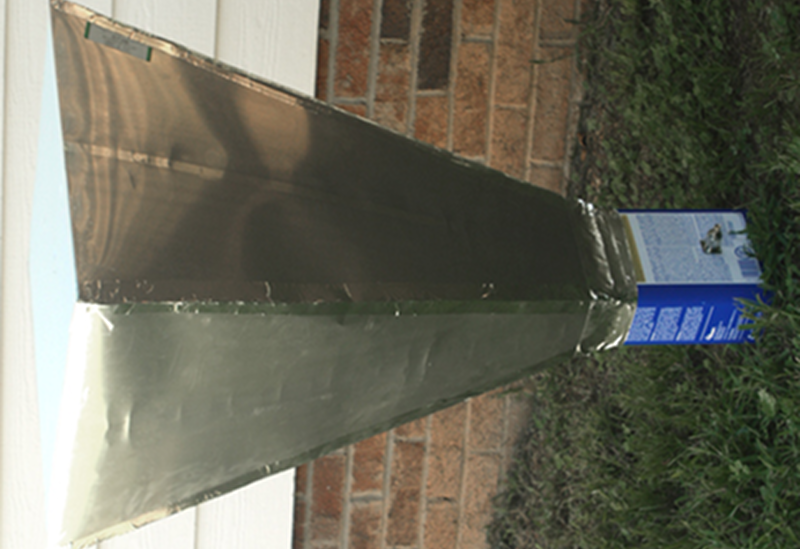
[David Schneider] asked himself, “How big a radio antenna would you need to observe anything interesting?” The answer turns out to be a $150 build of a half meter antenna. He uses it to detect the motions of the spiral arms of the Milky Way. The first attempt was a satellite TV dish and a cantenna feed, which didn’t work as the can wasn’t big enough to pick up signals at the 21cm wavelength of hydrogen emissions. Interstellar gas clouds are known to emit radio energy at this frequency.
Looking online, [David] tried aluminized foam board insulation, but was worried that the material didn’t seem to actually be conductive. A quick thrown-together Faraday cage with a cell phone didn’t seem to block any calls. Abandoning that approach, he settled on aluminum flashing used for roofing.
The roll of flashing was ten feet long and 20 inches wide, so that limited the antenna’s design. Still, an online calculator showed a theoretical gain of 17dB. A can still shows up in the final build — a paint thinner can.
There was a time when picking a receiver for a project such as this would be a challenge. Nowadays you can just pick up an RTL-SDR and you are good to go. The setup is sensitive enough to pick up the frequency of gas clouds and detect the Doppler shift between the arms heading towards us and those traveling away from us.
Depending on your goals, you can use a TV dish for radio astronomy work. Probably none of these will pick up what the Chinese can hear with their new 500 meter installation.
